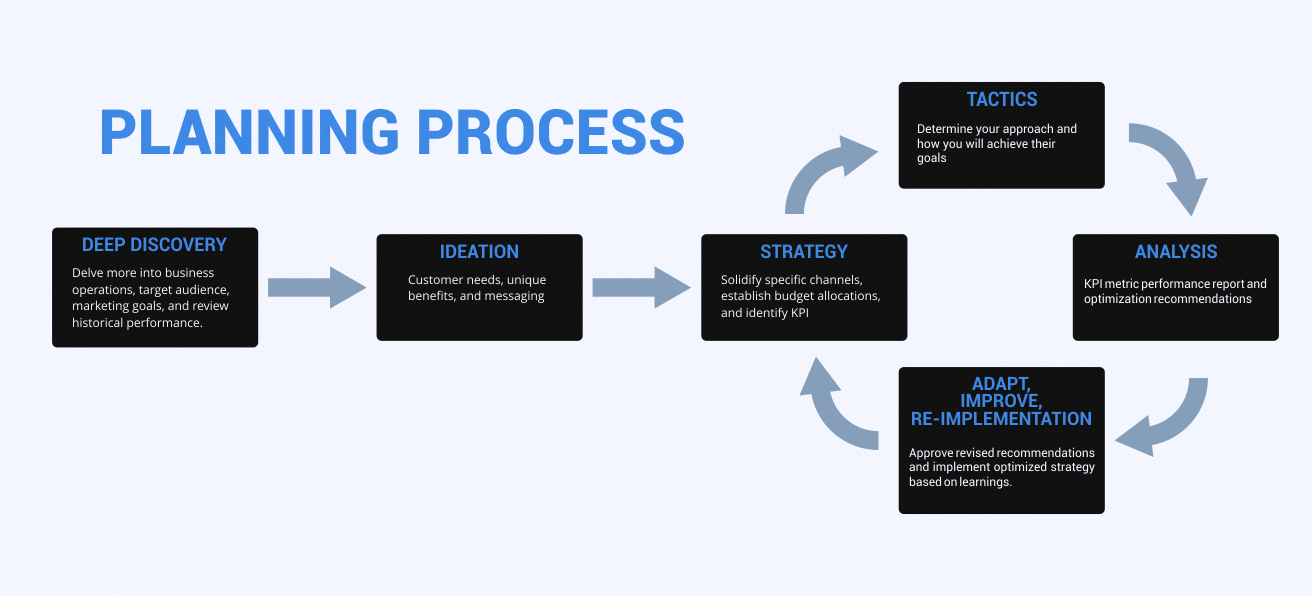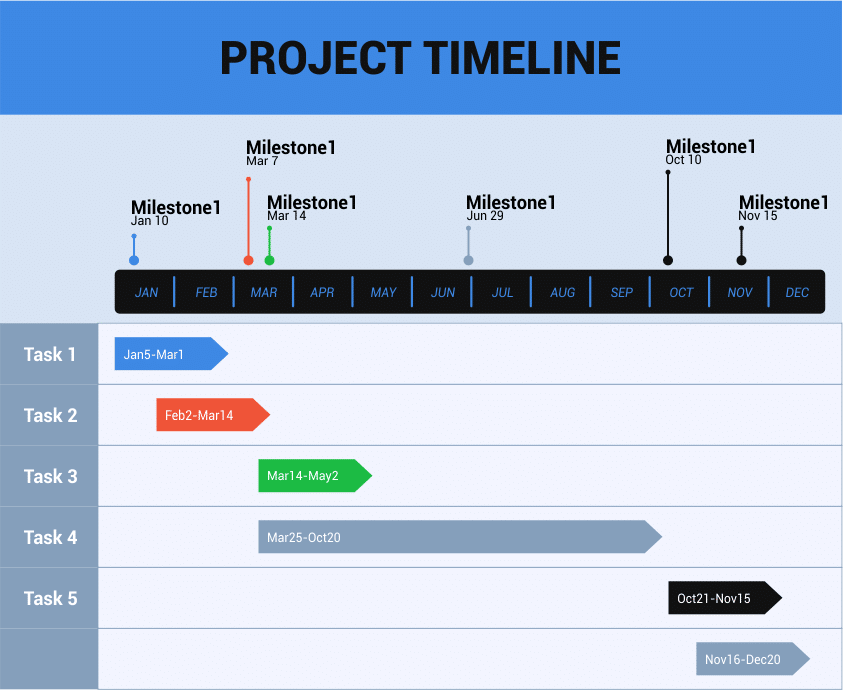Reputation management is critical for blue-chip tech companies and local bakeries alike. If you’re an agency offering a reputation management service, you recognize this fact. Luckily, so do a great many business owners and executives, which is why many firms are interested in working with agencies that understand how to manage and improve their online reputation.
When writing a reputation management proposal, your task is to make potential clients understand not only the importance of reputation management, but also the value you can bring to their business. In other words, you want them to buy into your service offering.
This guide will cover all of that. We will look at how to structure your reputation management proposal so the decision-makers sign on the dotted line.
The importance of a clear value proposition
No matter what kind of proposal you’re presenting, the biggest challenge is always the same. That is, you’re another person trying to sell something. The only way to get around this is to focus on their bottom line.
For online reputation management, this means two things.
First, there are the losses businesses make when their reputation is damaged. This could be through an out and out boycott, or it might result from one too many bad reviews. In either case, the business will lose revenue.
Secondly, you have the many ways a positive brand reputation translates into increased revenue. Through your reputation management proposal, you need to get them to recognize that the net gain an improved online reputation has, will generate them more money than your service costs. When you get to the bottom of everything, that’s your value proposition.
It’s crucial to spell this out. Your review profile is directly linked to the number of customers you can attract. More positive reviews means more business, and ultimately more revenue.
How to align your objectives with their goals
Let’s be honest with each other, very few companies will ask you to help manage their online reputation when everything is going well. Normally, a business will come to you when there is an emergency, and they want the problem fixed yesterday.
This has certainly been my experience when I talk to people with an agency background.
Regardless, when a company turns to an agency for a service, they are looking for a reliable team of experts to help them do something their team would find difficult or impossible to achieve independently. Through your reputation management proposal, you need to convince them that you have the experience and expertise. Not only that, but you also need to show them that you have a plan to solve the problem.
You’ll probably only use bits of the plan. That’s certainly what normally happens with a business plan. But you must have a clear framework to sell your potential client. After all, experts always have a plan.

Importantly, you should be able to explain how each part of your plan will help the business achieve its goal. The three biggest business problems related to reputation management are:
- Attracting new customers
- Retaining existing customers and maximizing their lifetime value
- Mitigating the risk and impact of bad press
Companies don’t care how you achieve this. They care about the outcome.
Secondly, each stage of your reputation management proposal should have something interesting happening. Structuring a project in waves ensures that there is always something interesting/ important happening. This helps justify the length of the project and makes it easy for the client to sign off.
So, before you start writing your reputation management proposal, I strongly suggest that you have a team brainstorm. Define your strategy, create the waves of your project, and determine how what you’re doing helps the company you are pitching to achieve their goals at each stage of the project.
How to write your reputation management proposal
All effective business proposals follow a similar structure. First they grab the reader with an irresistible value proposition. Then they guide the reader through the process for achieving this added value. With this in mind, let’s look at how to structure your reputation management proposal.
Create a compelling introduction
As we said, a good introduction grabs the attention of the reader. In the case of a proposal, this involves making a concrete promise. More specifically, you’ll use this as a chance to set a goal for the project in precise terms. You should be forthright about this.
For example, the intro to a reputation management proposal may begin with:
- Our goal is to help you earn 10% more reviews than your top competitor
Setting a goal early on helps your potential client understand what you want to achieve. The rest of your reputation management proposal will cover how you are going to help them achieve this goal.
There are two more things you want to establish at the outset of a proposal. They are:
- Define the problem
- Introduce the hero - that’s your agency
Defining the problem sets the context for your proposal. Again, all you are doing is reassuring the client that you understand the issues they are facing.
Finally, introducing your agency, and sharing a few select brand logos, will help in two ways. On the one hand, you are humanizing the agency and its employees. People like to work with people. Secondly, it’s a chance for you to undertake some humble bragging and establish credibility.
Outline your winning strategy
The main portion of your reputation management proposal will outline your strategy. Here you will explain the exact steps you’ll take to solve their business problem. In terms of layout, you have a couple of options. For instance, you might choose to present your strategy in phases.
You can check out our 30-day reputation management business plan and 90-day reputation management business plan for how to go about this. Whatever your time-scale, the basic idea is the same. Essentially, you want to break up your strategy into three stages.
For reputation management, this would look something like this:
- Phase 1 - This is where you do your preparatory work. Key activities include planning, setting goals and KPIs, creating initial landing pages and identifying influencers to work with.
- Phase 2 - This is your implementation phase. In other words, you’ll start actioning your review acquisition strategy, optimize your funnels and start reporting.
- Phase 3 - If everything’s going well, this will be a continuation of phase 2. Most of the time however, it will be a process of continuous improvement until your headline goals are met.
There are also certain activities which go on in the background throughout. These include helping the client improve operations on their own end to improve their review profile. For example, encouraging them to improve their service and order fulfilment.
Alternatively, it may be more appropriate to place your activities into related groups. In either case, this is an educational exercise.
That is, the key is to educate the reader about how reputation management is linked to the business problem you’ve identified. For example, if part of your strategy is review management, you can outline how bad reviews can hurt sales by as much as 90%.
Importantly, as you contextualize the theory, make it real to them. Show them the negative reviews that you’ve found online, which are harming their reputation. This is a sales technique. You are aggravating the problem your potential customer has to create a desire for the solution.
Crucially, you should do this without using any jargon. That is, you’re trying to communicate value to a non-specialist. If they can’t understand your proposal, it’s hardly going to be effective.
Instead, the trick is to communicate in plain English, without sacrificing any detail.
Provide a project timeline
Once you’ve outlined each step of the process, you want to cement everything in the client’s head. An attractive and easy to understand project timeline is a nice way to do this.
Make sure your project timeline is visually appealing and easy to understand.

In addition to the project timeline, I recommend you outline your project deliverables. This should be a long list. I recommend that the length of your list of project deliverables is proportional to the amount you plan to charge for your reputation management services.
This is a sales strategy I learned from a friend who runs a marketing agency. A long list of deliverables shows that you will be putting a lot of work into the project.
Pull in some case studies
Once you’ve established your credentials, and proposed a plan, you want to show your prospective that other companies like theirs have benefitted from your solution. This is the moment to pull in your client testimonials.

Source: Better Proposals
You can use multiple testimonials in your proposal.
When sharing testimonials, try to define what success meant for the company. This could be more customers, higher revenue, or whatever. You can then finish this with a testimonial about how easy you are to work alongside.
Next steps after structuring your reputation management pitch
This guide to writing a reputation management proposal covers how to structure your pitch. Once you’ve finished the pitch, I recommend you let at least one of your colleagues review the proposal. When everybody is happy with the proposal, you should arrange a video call or a meeting with the client.
In the meeting, you should cover each step of the proposal with the client. This is your opportunity to address questions that they have or problems they raise. You might need to review and update the proposal at the end of the meeting.
You can use an online proposal management software solution, like Better Proposals, to create your proposal. Assuming that the client is happy with the proposal, you can try to get them to sign off immediately thanks to the electronic signature functionality.
How to create a winning reputation management proposal
When creating a reputation management proposal, your major challenge is convincing potential clients that this is something they can’t do themself. Through a clear value proposition, you need to convince the client that an investment in your reputation management service justifies the cost.
Therefore, your goal is to influence the value calculation, so that they’re convinced that a reputation management service will bring value to the business. In fact, at each stage you should communicate how everything you do will either bring in additional sales, or prevent losses.
Using the structure above, you can create reputation management proposals which win out every time. These begin by setting a project goal, which solves the prospect’s business problems.
The proposal then educates the prospect in terms of how reputation management can solve this problem, and shows how others have benefited from your services. Finally, it outlines the simple terms under which they can benefit too.









